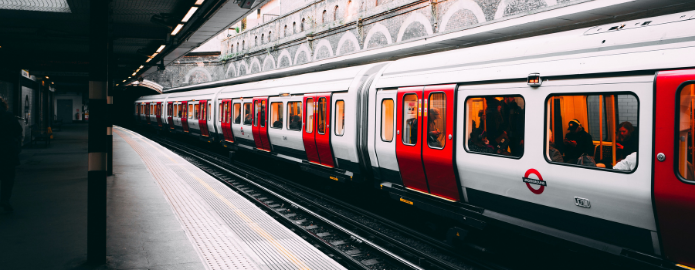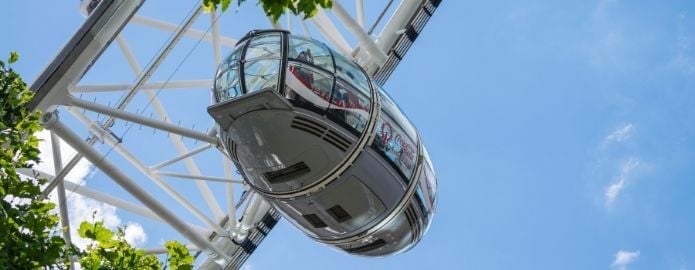It can be daunting to move to such a vibrant, cosmopolitan and metropolitan city. Not to mention a whole new country. But moving to London alone is also extremely exciting and will almost certainly be a truly incredible experience.
These 10 tips will help you transition into your new city as smoothly as possible, so you can make London feel like home and get the most out of your time here. But be warned - you might love it too much to leave!
Our 10 top tips for international students studying in London!
1. Get Prepped
Make sure you have all your paperwork in order, including your student visa, and any funding you might have available to you.
Save yourself the hassle, waiting times and transaction fees by setting up a UK bank account.
Make sure you will have access to healthcare. The NHS (National Health Service) covers some basics that a lot of visitors are entitled to - but it’s worth making sure and getting health insurance for anything that’s not covered.
2. Find Your Home
There are so many types of student accommodation to choose from in London, it can be overwhelming.
WHERE?
Living in central London can be quite busy and loud - but the neighbourhoods throughout London are diverse, ranging from lively and full of people, to leafy, green and spacious. There’s something for everyone - so find an area to live in which suits you.
KEEP THINGS SIMPLE
If you’re moving from abroad you can make things much simpler for yourself by choosing accommodation that is already fully-furnished.
You can opt for even more convenience if you go for an apartment at Dolphin Square. As well as giving you the luxury of regular onsite support, these also come with quality assurance and protect you from being exploited by rogue landlords.
IT'S GOOD TO SHARE
Living alone in London can be pricey. Save yourself a fortune by considering a flatshare with other students, it can be a great way to meet new friends and kickstart your social life as you settle in.
It’s also helpful to know that households of full-time students are exempt from paying council tax (a location-specific tax which covers costs in your local community, such as waste disposal, street cleaning, park maintenance and care for the vulnerable and elderly.)
3. Get to know London transport
There is great public transport in the city and using it to get around is part of the London way of life. As well as the iconic and far-reaching London Buses and London Underground, there are also Overground rail lines and ‘Santander Cycles’ for rent (which you pick up at the start of your journey and park up at a docking station near your destination.)
All of these can be paid for with a contactless card, Samsung or Apple pay, or you can get and load up an Oyster Card. There are also broad, well-kept pavements and free-standing pillar-maps throughout the city for those happy to walk.

4. Use student discounts
There are lots of student discounts available in the UK, on everything from food and clothes to cinema tickets and entrance fees, you just need to flash your photo student ID from your university or institution.
The National Union of Students has an initiative called ‘Totum’ where you can sign up and get a Student Card and digital ISIC (International Student Card) which costs a small annual fee but which is recognised anywhere you’ll find a student discount in places all over the world. They also post tips, discount offers and student treats on their website.
They are also vehement advocates for student rights and will answer any questions you might have, including about housing and COVID.
Buying a Student Railcard can get you a third off all rail travel to anywhere in the UK! It’s billed as a 16-25 card, but any student in full-time education is eligible. So you can take discount trips to explore other parts of the country.
5. Budget
Living in London as a student can be pricey if you’re not careful. You can keep a lid on your spending by doing a bit of budgeting. Lots of online banking apps have useful software for this.
You can pick up bits you need for living in your London apartment from markets (both real and online, such as Facebook Marketplace or eBay)
Other than rent, your biggest expense is likely to be food - and in a city with so much choice in terms of restaurants, cafes, takeaways and street food it is pretty tempting to eat out for every meal - but cooking at least some meals in your home is a great thing to do with friends and can save you some money.
If you would rather not cook but still want to save there is also ‘Too Good to Go’, an app which links together hungry foodies with food that might otherwise be wasted, at reduced prices - so you can save your wallet, your stomach and the planet all at the same time!
6. Eat out!
London is incredibly multicultural and has food to match. You can find any cuisine you can think of in the city, at establishments that range from high-end, Michelin-starred restaurants all the way through to pop up delicious street food.
When you do go out for meals, you can work your way through a guide or just go out and take some risks, with so much choice you’ll be sure to find some wonderful hidden gems and your new favourite dinner spots.
You can find vouchers on sites like Groupon or LivingSocial.
7. Top places to hang out - make friends, indulge in the British culture.
COVENT GARDEN
A great place to meet friends and hang out. There’s a vibrant atmosphere, is pedestrianised and there are street performers as well as cafes and restaurants of all types. There are excellent places to eat packed in around Covent Garden. These range from inexpensive Mexican, Indian and Brazilian up to traditional pub grub, all the way to upscale fine dining.
Especially brilliant if it’s your first time in London and you want to experience as much as you can. Great dining and theatre scene (when it’s permitted) and it’s within easy walking distance of numerous big attractions, such as the National Gallery, Houses of Parliament, and the London Eye.
SOHO
For those that love to party, Soho is the heart of London’s alternative nightlife, with a big LGBTQ+ scene and a wide range of bars and clubs and venues, you can usually find something to keep you entertained until the sun comes up!
PIMLICO
It’s only a few minutes walk from the thriving hustle and bustle of the city - but the area itself has lots of green space, which is a treat in a city the size of London. Pimlico offers a slightly slower pace for when you need to relax. There are lots of lovely cafes and restaurants to work and hang out in.
8. Sightsee
London has some of the most famous attractions in the world. Here’s what you simply must see -
The London Eye
An iconic part of the London Skyline, the London Eye (or Millenium Wheel) was built in 2000, on the South Bank of the River Thames and is Europe's tallest cantilevered observation wheel. The view of London from the top is spectacular.
Westminster
This district by the Thames holds the highest concentration of tourist attractions in London, including: The UNESCO Palace of Westminster or “Houses of Parliament”, Westminster Abbey, Westminster Cathedral, Buckingham Palace and Big Ben (or as pedantic locals will be quick to tell you - it’s actually called The Clock Tower, or Elizabeth Tower - “Big Ben” is actually the name of the huge 13-tonne bell inside which strikes the time.)
Tower Bridge
Another recognisable landmark, Tower Bridge - not to be confused with London Bridge - is beautiful at any time of day, but at dusk, you get the best of both worlds. It is very romantic when it’s lit up at night. You can walk across it or enjoy it from the river banks, and you can even pay admission to go up the towers and cross the higher walkway.
Art galleries and museums
London has brilliant museums and galleries, and since 2001 admission to all National galleries in the UK is free! This includes: The Tate Modern, The National Portrait Gallery, The National History Museum. There might be optional collections or areas which cost an admission fee and they’re usually well worth it.
A walk in the park
For such a busy and populated city, London has an exceptional amount of green spaces. Ideal for sitting in the summer sunshine with a book or walking with friends in the crisp winter air. There are small squares and parks dotted all over the capital and there are huge rolling parks. Some of the more impressive ones include St. James’, Alexandra and Hyde Park.

9. Volunteer
Immerse yourself in your local community. Whatever your skills and passion, there are all sorts of brilliant causes, groups and projects going on across the city which you can get involved in. As well as doing good for the people around you, volunteering can help you access a readymade social group and feel more at home.
10. Chat in English
Whether your English needs improving or if it’s fluent and flawless, you can sign up to participate in English conversation classes. They’re fun, often free and are a great way to meet other people who are new to the city (and country).
Whatever your interests you can create the version of London that is right for you. Explore, indulge, make new friends and make the most of your time studying in The Big Smoke.
In short, get yourself ready for an experience you’ll never forget!





